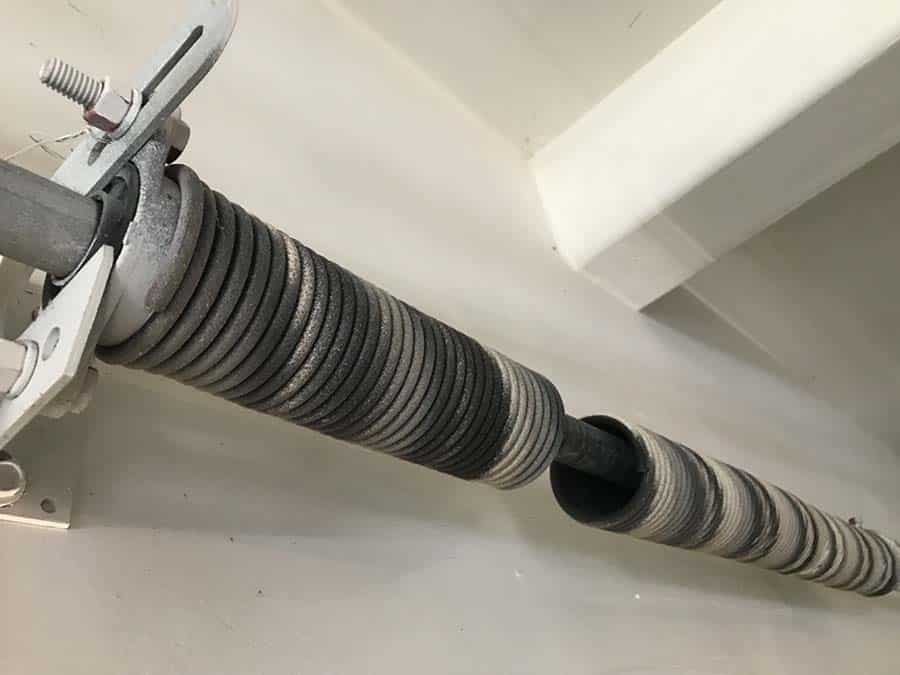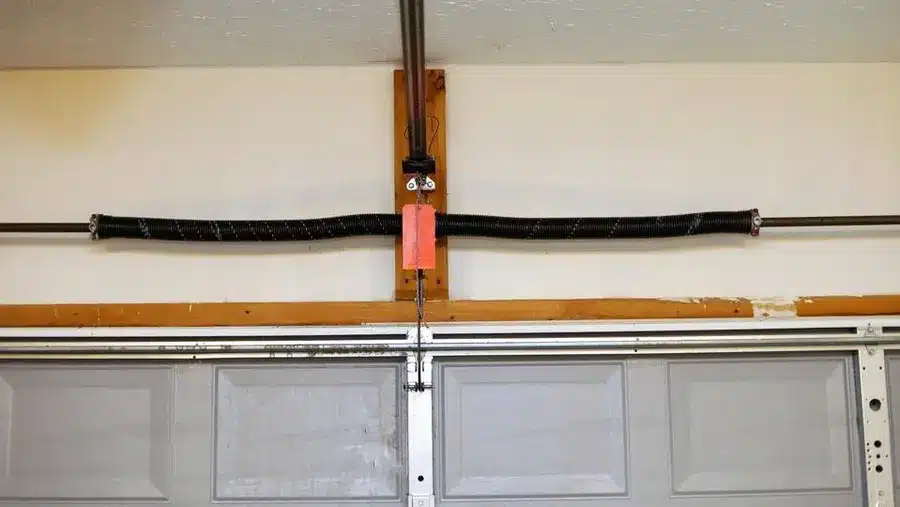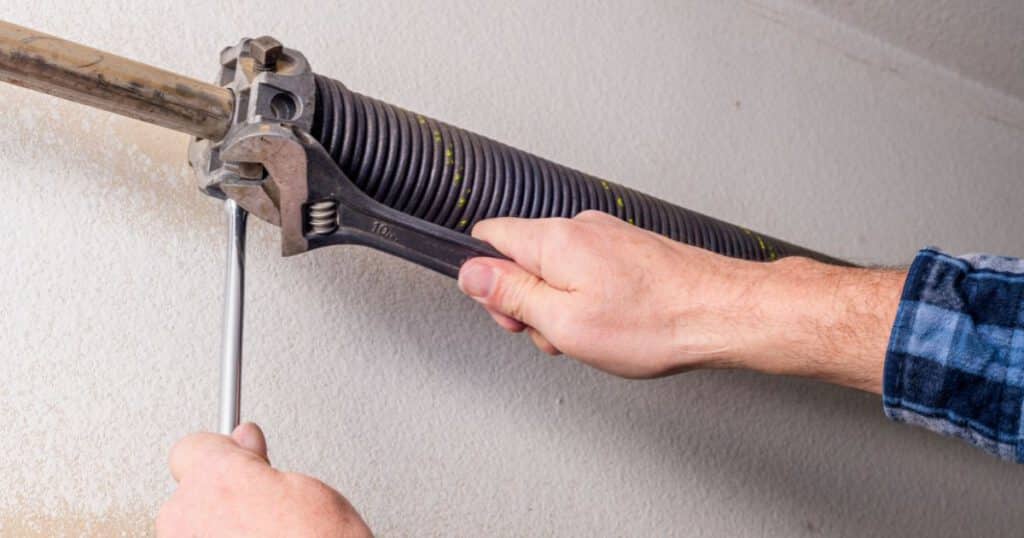A garage door is not merely a convenience; it’s a vital component of your home’s security and functionality. At the heart of this mechanical marvel lies a seemingly humble yet crucial element: the garage door spring. These springs are the unsung heroes that bear the weight of the door, allowing it to open and close smoothly, day in and day out.
Today, we embark on a journey to explore the world of garage door springs. We’ll delve into the intricacies of different types, understanding their roles, advantages, and considerations. Choosing the right type of spring isn’t just about convenience—it’s about ensuring the safety of your loved ones and protecting your property. So, let’s dive in and discover why selecting the appropriate garage door spring is paramount for optimal functionality and safety.
Garage door springs are more than just coiled metal; they’re the lifeline of your garage door’s operation. Whether you’re looking for durability, efficiency, or specialized features, understanding the various types of springs available is crucial. So, let’s unravel the mystery surrounding garage door springs and equip ourselves with the knowledge to make informed decisions. Let’s begin!

Torsion Springs
Torsion springs are the workhorses of garage door systems. Unlike their extension counterparts, which stretch and contract, torsion springs utilize torque or twisting force to counterbalance the weight of the garage door. They’re typically mounted horizontally above the door opening and connected to a metal shaft. When the door is closed, the torsion springs store energy. When it’s time to open, they release this stored energy, helping lift the door smoothly and efficiently.
Advantages and Disadvantages
One of the significant advantages of torsion springs is their durability. Due to their design, they typically have a longer lifespan compared to extension springs. Additionally, torsion springs provide smoother and more controlled movement, reducing wear and tear on other garage door components.
However, torsion springs can be more complex to install and replace compared to extension springs. Their installation often requires specialized knowledge and tools, making professional installation advisable. Additionally, because of their location above the door, torsion springs pose a higher risk of injury if mishandled during installation or maintenance.
Common Applications
Torsion springs are widely used in residential and commercial garage door systems. They’re suitable for a variety of door sizes and weights, making them a versatile choice for many applications. Whether you have a single-car garage or a large commercial facility, torsion springs can provide reliable and efficient operation for years to come.
In residential settings, torsion springs are commonly found in sectional overhead garage doors. They’re also used in commercial and industrial settings where heavy-duty doors require robust lifting mechanisms. Overall, torsion springs are a popular choice for their reliability, longevity, and smooth operation, making them a staple in the world of garage door systems.
Extension Springs
Extension springs are another essential component of garage door systems, working in tandem with torsion springs to support and facilitate smooth door movement. Unlike torsion springs that twist, extension springs stretch and contract to counterbalance the weight of the garage door. These springs are typically installed perpendicular to the door tracks, running alongside the horizontal tracks on both sides of the door.
When the garage door is closed, extension springs are in their most relaxed state, hanging vertically along the tracks. As the door opens, these springs stretch, storing energy. When the door closes, the stored energy is released, assisting in the smooth closing motion.
Advantages and Disadvantages
One of the primary advantages of extension springs is their simplicity. They’re relatively straightforward to install and replace compared to torsion springs, making them a popular choice for DIY enthusiasts. Additionally, extension springs are typically more affordable than torsion springs, offering a cost-effective solution for homeowners.
However, extension springs have their drawbacks. They’re generally less durable than torsion springs and have a shorter lifespan. Because they’re under tension when the door is closed, extension springs are more prone to wear and tear, requiring more frequent maintenance and replacement. Moreover, the stretching and contracting motion of extension springs can create a jerky door movement, potentially leading to premature wear on other garage door components.
Common Applications
Extension springs are commonly used in residential garage door systems, particularly in single-car and lightweight double-car doors. They’re suitable for smaller doors where space constraints or budget considerations may limit the use of torsion springs. Additionally, extension springs are often found in older garage door systems that were built before the widespread adoption of torsion spring technology.
While extension springs may not offer the same level of durability and smooth operation as torsion springs, they remain a viable option for many homeowners, providing reliable support for their garage doors. With proper maintenance and regular inspection, extension springs can offer years of dependable service, ensuring the smooth opening and closing of your garage door.

Wayne Dalton TorqueMaster Springs
Wayne Dalton TorqueMaster Springs represents a unique and innovative approach to garage door spring technology. Unlike traditional torsion or extension springs, TorqueMaster Springs are housed within a steel tube, which encases and protects the spring mechanism. This design not only enhances safety but also reduces the risk of injury or property damage in the event of spring failure.
Unique Features and Benefits
One of the standout features of Wayne Dalton TorqueMaster Springs is its enclosed design, which shields the spring from external elements such as dust, debris, and moisture. This not only prolongs the lifespan of the spring but also ensures consistent performance and reliability over time.
Additionally, TorqueMaster Springs are known for their smooth and quiet operation. The enclosed design minimizes friction and vibration, resulting in quieter door movement compared to traditional garage door springs. This makes them an ideal choice for homeowners who value peace and tranquility in their living spaces.
Furthermore, Wayne Dalton TorqueMaster Springs offers enhanced safety features. The enclosed design reduces the risk of accidents or injuries associated with exposed springs, providing peace of mind for homeowners and their families.
Considerations for Installation and Maintenance
While Wayne Dalton TorqueMaster Springs offers numerous benefits, it’s essential to consider certain factors during installation and maintenance. Due to their specialized design, the installation of TorqueMaster Springs may require professional expertise and specialized tools. Attempting to install or repair these springs without proper knowledge and equipment can lead to safety hazards and damage to the garage door system.
Regular maintenance is also crucial to ensure the optimal performance and longevity of TorqueMaster Springs. This includes periodic inspection of the spring mechanism, lubrication of moving parts, and adjustment of tension as needed. Additionally, any signs of wear or damage should be addressed promptly to prevent further issues and maintain the safety and functionality of the garage door system.
Overall, Wayne Dalton TorqueMaster Springs offers a unique combination of safety, performance, and convenience. By understanding their features and considerations for installation and maintenance, homeowners can make informed decisions and enjoy reliable and efficient operation of their garage doors for years to come.
Hybrid Springs
Hybrid springs represent an innovative fusion of traditional garage door spring technologies, offering a blend of the best features from both torsion and extension springs. These springs typically feature a combination of torsion and extension elements, providing a balanced approach to counterbalancing the weight of the garage door.
Hybrid springs often consist of torsion springs mounted horizontally above the door opening, supplemented by extension springs that run alongside the vertical tracks on both sides of the door. This hybrid design allows for smoother operation and a more even distribution of force, reducing strain on the garage door system.
Advantages over Traditional Springs
One of the primary advantages of hybrid springs is their versatility and adaptability to various garage door configurations. By combining elements of both torsion and extension springs, hybrids can accommodate a wider range of door sizes and weights, providing greater flexibility for homeowners and installers.
Additionally, hybrid springs offer improved balance and stability compared to traditional torsion or extension springs alone. The combination of torsion and extension elements ensures a more even distribution of force, reducing the risk of uneven door movement and premature wear on other garage door components.
Furthermore, hybrid springs are often designed with safety and durability in mind. The balanced approach to counterbalancing the door’s weight minimizes stress on individual components, resulting in longer-lasting performance and reduced maintenance requirements.
Considerations for Installation and Maintenance
While hybrid springs offer numerous advantages, it’s essential to consider certain factors during installation and maintenance. Due to their hybrid design, installation of these springs may require specialized knowledge and tools. Professional installation is often recommended to ensure proper setup and alignment, reducing the risk of accidents or injuries.
Regular maintenance is also crucial to maximize the lifespan and performance of hybrid springs. This includes periodic inspection of the spring mechanism, lubrication of moving parts, and adjustment of tension as needed. Additionally, any signs of wear or damage should be addressed promptly to prevent further issues and ensure the safety and functionality of the garage door system.
In summary, hybrid springs offer a compelling blend of versatility, stability, and durability, making them an attractive option for homeowners seeking reliable and efficient garage door operation. By understanding their features and considerations for installation and maintenance, homeowners can make informed decisions and enjoy the benefits of hybrid spring technology.

FAQs: Unlocking the Mysteries of Garage Door Springs
What factors should I consider when choosing between torsion and extension springs?
When selecting between torsion and extension springs, several factors come into play. Firstly, consider the size and weight of your garage door. Torsion springs are typically better suited for heavier doors, while extension springs may suffice for lighter doors. Additionally, consider your budget and maintenance preferences. Torsion springs generally last longer but may require professional installation and maintenance, whereas extension springs are more affordable but may need more frequent replacement.
Are there any safety precautions I need to take when installing or repairing garage door springs?
Absolutely. Safety should be a top priority when dealing with garage door springs. Always ensure the door is fully closed and disconnected from the opener before attempting any repairs. Use appropriate safety gear, such as gloves and eye protection, and follow manufacturer instructions carefully. If you’re unsure or uncomfortable with the process, it’s best to seek professional assistance to avoid accidents or injuries.
How long do garage door springs typically last?
The lifespan of garage door springs can vary depending on factors such as usage frequency, quality of the springs, and environmental conditions. On average, torsion springs can last anywhere from 5 to 7 years, while extension springs may need replacement every 7 to 9 years. Regular maintenance and proper care can help extend the lifespan of your springs.
Can I replace my garage door springs myself, or should I hire a professional?
While some homeowners may have the skills and tools to replace garage door springs themselves, it’s generally recommended to hire a professional for this task. Garage door springs are under high tension and can be dangerous to handle without proper knowledge and experience. Professional installers have the expertise to safely install and adjust springs, minimizing the risk of accidents or damage to the door system.
Are there any signs that indicate my garage door springs need to be replaced?
Yes, several signs may indicate that your garage door springs need replacement. These include:
- Visible signs of wear or damage, such as cracks or gaps in the springs
- Uneven movement or jerking when opening or closing the door
- Excessive noise, such as squeaking or grinding, during the operation
- Difficulty in manually opening or closing the door
- Sagging or imbalanced door sections
If you notice any of these signs, it’s essential to have your springs inspected by a professional to determine if replacement is necessary. Prompt replacement can prevent further damage to your garage door system and ensure continued safety and functionality.
Conclusion
In conclusion, understanding the different types of garage door springs is paramount for ensuring the smooth and safe operation of your garage door. Torsion springs, extension springs, Wayne Dalton TorqueMaster Springs, and hybrid springs each offer unique features and advantages that cater to specific needs and preferences. By familiarizing yourself with these options, you can make informed decisions that enhance the functionality and longevity of your garage door system.
As you consider the various types of garage door springs, we encourage you to delve deeper into the specifics of each option. Take the time to research and understand the benefits and considerations associated with torsion springs, extension springs, Wayne Dalton TorqueMaster Springs, and hybrid springs. By arming yourself with knowledge, you can make confident decisions that align with your requirements and priorities.
For detailed insights and answers to frequently asked questions about garage door springs, we invite you to continue exploring our comprehensive resources. Whether you’re seeking guidance on selecting the right type of spring for your garage door or need tips for installation and maintenance, our in-depth articles and FAQs provide valuable information to support your journey. Click here to access our resources and empower yourself with the knowledge needed to optimize your garage door system.
In closing, thank you for joining us on this exploration of garage door springs. By understanding the nuances of each type and considering factors such as durability, efficiency, and safety, you can ensure that your garage door operates smoothly and reliably for years to come. As always, we’re here to assist you every step of the way in your garage door journey.



